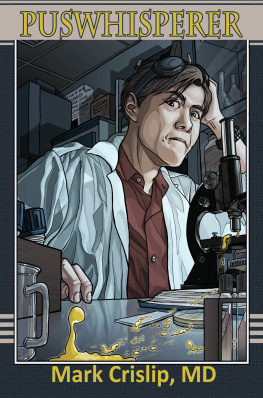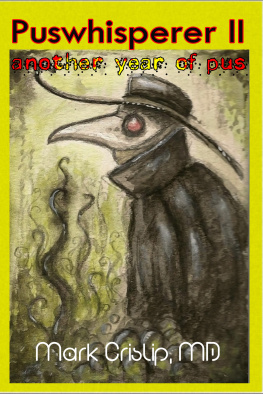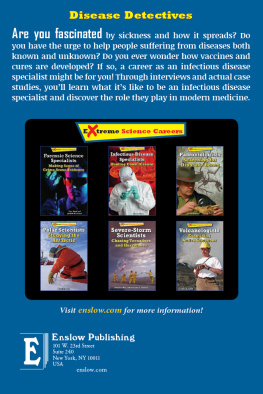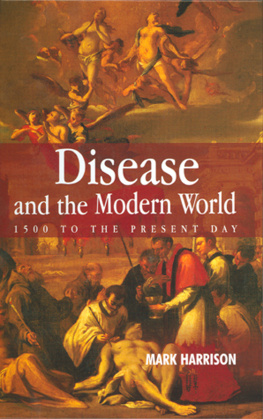Peer pressure
O ne week I went to Employee Health and commandeered the influenza vaccine cart. We are a bit over 50% for employee flu shots, and I think it is important for as many people as possible to get the shot. It allows me to inject those government-sponsored tracking nanobots.
Then I wandered from station to station offering flu shots.
Who, I would demand loudly, dares to refuse a flu shot from the great and powerful Chief of Infectious Disease?
Most said they already had the shot, but in two hours I managed to give 13 flu shots. Actually, they are anti-flu shots. Sometimes a patient asks for something for pain, and I think, Well, you could stub your toe. English is often imprecise.
It was fun. People were shocked that I was actually giving a shot. Several people thought I was a nurse, since a doctor giving a shotactually doing the work instead of writing an order and walking awayis rare. Several nurses complimented me on the quality of my injection; I assume they were incredulous that I was competent to give a shot. Like a bear riding a bicycle, it is not that I do it well, but that I could do it at all.
I had the opportunity to talk to people about who should get the flu shot and about the disease. On every unit there was one person who would not make eye contact with me or offer to get the shot. I presume they are the people who will not get the flu shot no matter what the reason but are unwilling to talk to the all-knowing Oz.
There is one nurse I still need to get. Evidently she NEVER gets the flu shot, and is proud of it, but she was off for a few days. I will not put her name on the blog, but everyone on the unit knows I am gunning for her.
If there is anyone reading this who is an ID doc, I suggest you put aside a couple of hours one day and do the same thing at your hospital. It will make an impression as to the importance of the flu shot, and you will have a good time.
Often in error, never in doubt
O n rounds today I got a curbside.
One of the ICU nurses wanted to know what was going on with her young son. I get many such questions every day as I walk around my hospitals.
He had played a particularly muddy soccer game at one of the local schools over the prior weekend, and she noted that his shoeswhich had been sitting uncleaned in the garage all weeknow smelled like cat piss. Her words. I know of no infection that smells like cat piss.
And more interestingly, her son was covered with pustules that looked like chickenpox, which he couldnt have had because he had had both the disease and the vaccine twice. Look, I just report what people tell me.
We talked about it for a bit: how muddy the field was, and how my son was playing tomorrow, and how I hoped the field dried out. I admitted that I was uncertain what her son had; it didnt ring any bells. Then, as I was about to walk away, a bell rang.
There is some infection associated with muddy Australian rugby players, I said. What is it?
And where in the hell did that thought come from? That is one of the issues I have working in a teaching hospital. Some of the ideas I come up with do not arise in the conscious mind, and my later explanation of the diagnosis is an after-the-fact rationalization. Most of my best diagnoses come from some part of my brain that I have no control over. The thought burbles up through my brain like a bubble in a tar pit.
Pop. The patient has
Google to the rescue. Google often makes me look smarter than I am, a quick search and the instant appearance of genius. Dont tell anyone thats my secret.
I entered Australia, rugby, mud, infectionand viola! (I can spell instruments better than French). I had read this article once, four years ago. Where is that memory stored and how did I access it? Got me.
I was almost right. It was mud football, not rugby, but almost the same thing.
On 16 February 2002, a total of 26 people presented to the emergency department of the local hospital in the rural town of Collie in southwest Western Australia with many infected scratches and pustules distributed over their bodies. All of the patients had participated in a mud football, competition the previous day, in which there had been > 100 participants. One patient required removal of an infected thumbnail, and another required surgical debridement of an infected toe. Aeromonas hydrophila was isolated from all 3 patients from whom swab specimens were obtained. To prepare the mud football fields, a paddock was irrigated with water that was pumped from an adjacent river during the 1-month period before the competition. A. hydrophila was subsequently isolated from a water sample obtained from the river. This is the first published report of an outbreak of A. hydrophila wound infections associated with exposure to mud.
Is this what the kid has? I dont know. There are other organisms that can cause pustules and folliculitis, some of which are associated with mud or water. I asked her to take her kid to the doc to culture the pustule. Perhaps it is another water-borne organism. I printed off the reference for her to take to the pediatrician.
I enjoy swinging for the fence for a diagnosis. People remember if you are spectacularly right. I am more often wrong than right, but doctors are always making a wrong diagnosis in medicine. Good docs are not those who are initially right, but those who do not stick to the initial ideas when they are wrong.
I hope I get a culture on this one.
Rationalization
Outbreak of Aeromonas hydrophila Wound Infections Associated with Mud Football (http://www.ncbi.nlm.nih.gov/pubmed/15095211). Clinical Infectious Diseases 2004; 38:1084.
Postscript
The kid got better and the pustule was never cultured. Crap.
Frequently in error, never in doubtthe ID motto
T odays patient is a forty-five-year-old male whose life is even less eventful than mine.
Works, raises a family, sleeps.
Presents saying he has low back pain after some minor lifting. Dont we all at that age? Wait until you are my age, 357 in dog years. I am increasingly like the Tinman in the Wizard of Oz, except I cant seem to find the oil to get things loose again. I sympathize.
His back pain gets worser and worser (my sons parallel word with better), so he gets an MRI which reveals a spinal epidural abscess. Odd in that he has no risks; usually this is a disease of needle users or at least a complication of an infection elsewhere. He has none of the above.
Then there is the lack of disc space infection. Usually the bacteria are presumed to go to the disc first, as the disc at least has some blood flow, and from the disc the bacteria go into the epidural space.
Oh well, its a common medical aphorism that patients do not read the textbooks before coming into the hospital and so do not know how to manifest their diseases properly.
Epidural abscesses are usually due to staphylococci and streptococci, and I occasionally see those organisms causing disease for no damn good reason. So I say its probably going to be one of those organisms.
Imagine my surprise when the lab says the pus shows a gram-negative rod. Staphylococcus and Streptococcus are gram-positive cocci. The heck. More oddities.
But I am up to the task, pontificating that, Oh, its just after Thanksgiving, so this will probably be Salmonella . Tis the season, and Salmonella occasionally likes to cause extra-intestinal infections. Thats the ticket. Its going to grow Salmonella .
Days pass and the lab says that what ever it is, it is only growing anaerobically. What? An anaerobe? Now I am stumped. I have two guesses and two misses, so I wait. Three strikes and you are made comfort care.
It is Prevotella species that finally grows.
And the reason? Once a bug is identified, killing it, or at least selecting an antibiotic, is simple. I want to know why. Why? Why, why, why, why, why? Luck! Blind, stupid, simple, doo-dah, clueless luck! What is interesting, but nothing satisfies more than knowing why. This time no way, no why. I cant find the hint of a suggestion of a possibility of a reason for why.
Next page









